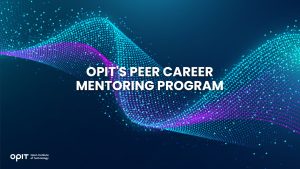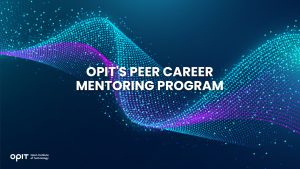

Technology transforms the world in so many ways. Ford’s introduction of the assembly line was essential to the vehicle manufacturing process. The introduction of the internet changed how we communicate, do business, and interact with the world. And in machine learning, we have an emerging technology that transforms how we use computers to complete complex tasks.
Think of machine learning models as “brains” that machines use to actively learn. No longer constrained by rules laid out in their programming, machines have the ability to develop an understanding of new concepts and deliver analysis in ways they never could before. And as a prospective machine learning student, you can become the person who creates the “brains” that modern machines use now and in the future.
But you need a good starting point before you can do any of that. This article covers three of the best machine learning tutorials for beginners who want to get their feet wet while building foundational knowledge that serves them in more specialized courses.
Factors to Consider When Choosing a Machine Learning Tutorial
A machine learning beginner can’t expect to jump straight into a course that delves into neural networking and deep learning and have any idea what they’re doing. They need to learn to crawl before they can walk, making the following factors crucial to consider when choosing a machine learning tutorial for beginners.
- Content quality. You wouldn’t use cheap plastic parts to build an airplane, just like you can’t rely on poor-quality course content to get you started with machine learning. Always look for reviews of a tutorial before engaging, in addition to checking the credentials of the provider to ensure they deliver relevant content that aligns with your career goals.
- Instructor expertise. Sticking with our airplane analogy, imagine being taught how to pilot a plane by somebody who’s never actually flown. It simply wouldn’t work. The same goes for a machine learning tutorial, as you need to see evidence that your instructor does more than parrot information that you can find elsewhere. Look for real-world experience and accreditation from recognized authorities.
- Course structure and pacing. As nice as it would be to have an infinite amount of free time to dedicate to learning, that isn’t a reality for anybody. You have work, life, family, and possibly other study commitments to keep on top of, and your machine learning tutorial has to fit around all of it.
- Practical and real-world examples. Theoretical knowledge can only take you so far. You need to know how to apply what you’ve learned, which is why a good tutorial should have practical elements that test your knowledge. Think of it like driving a car. You can read pages upon pages of material on how to drive properly but you won’t be able to get on the road until you’ve spent time learning behind the wheel.
- Community support. Machine learning is a complex subject and it’s natural to feel a little lost with the materials in many tutorials. A strong community gives you a resource base to lean into, in addition to exposing you to peers (and experienced tech-heads) who can help you along or point you in the right career direction.
Top Three Machine Learning Tutorials for Beginners
Now you know what to look for in a machine learning tutorial for beginners, you’re ready to start searching for a course. But if you want to take a shortcut and jump straight into learning, these three courses are superb starting points.
Tutorial 1 – Intro to Machine Learning (Kaggle)
Offered at no cost, Intro to Machine Learning is a three-hour self-paced course that allows you to learn as and when you feel like learning. All of which is helped by Kaggle’s clever save system. You can use it to save your progress and jump back into your learning whenever you’re ready. The course has seven lessons, the first of which offers an introduction to machine learning as a concept. Whereas the other six dig into more complex topics and come with an exercise for you to complete.
Those little exercises are the tutorial’s biggest plus point. They force you to apply what you’ve learned before you can move on to the next lesson. The course also has a dedicated community (led by tutorial creator Dan Becker) that can help you if you get stuck. You even get a certificate for completing the tutorial, though this certificate isn’t as prestigious as one that comes from an organization like Google or IBM.
On the downside, the course isn’t a complete beginner’s course. You’ll need a solid understanding of Python before you get started. Those new to coding should look for Python courses first or they’ll feel lost when the tutorial starts throwing out terminology and programming libraries that they need to use.
Ideal for students with experience in Python who want to apply the programming language to machine learning models.
Tutorial 2 – What Is Machine Learning? (Udemy)
You can’t build a house without any bricks and you can’t build a machine learning model before you understand the different types of learning that underpin that model. Those different types of learning are what the What is Machine Learning tutorial covers. You’ll get to grips with supervised, unsupervised, and reinforcement learning, which are the three core learning types a machine can use to feed its “brain.”
The course introduces you to real-world problems and helps you to see which type of machine learning is best suited to solving those problems. It’s delivered via online videos, totaling just under two hours of teaching, and includes demonstrations in Python to show you how each type of learning is applied to real-world models. All the resources used for the tutorial are available on a GitHub page (which also gives you access to a strong online community) and the tutorial is delivered by an instructor with over 27 years of experience in the field.
It’s not the perfect course, by any means, as it focuses primarily on learning types without digging much deeper. Those looking for a more in-depth understanding of the algorithms used in machine learning won’t find it here, though they will build foundational knowledge that helps them to better understand those algorithms once they encounter them. As an Udemy course, it’s free to take but requires a subscription to the service if you want a certificate and the ability to communicate directly with the course provider.
Ideal for students who want to learn about the different types of machine learning and how to use Python to apply them.
Tutorial 3 – Machine Learning Tutorial (Geeksforgeeks)
As the most in-depth machine learning tutorial for beginners, the Geeksforgeeks offering covers almost all of the theory you could ever hope to learn. It runs the gamut from a basic introduction to machine learning through to advanced concepts, such as natural language processing and neural networks. And it’s all presented via a single web page that acts like a hub that links you to many other pages, allowing you to tailor your learning experience based on what aligns best with your goals.
The sheer volume of content on offer is the tutorial’s biggest advantage, with dedicated learners able to take themselves from complete machine learning newbies to accomplished experts if they complete everything. There’s also a handy discussion board that puts you in touch with others taking the course. Plus, the “Practice” section of the tutorial includes real-world problems, including a “Problem of the Day” that you can use to test different skills.
However, some students may find the way the material is presented to be a little disorganized and it’s easy to lose track of where you are among the sea of materials. The lack of testing (barring the two or three projects in the “Practice” section) may also rankle with those who want to be able to track their progress easily.
Ideal for self-paced learners who want to be able to pick and choose what they learn and when they learn it.
Additional Resources for Learning Machine Learning
Beyond tutorials, there are tons of additional resources you can use to supplement your learning. These resources are essential for continuing your education because machine learning is an evolving concept that changes constantly.
- Books. Machine learning books are great for digging deeper into the theory you learn via a tutorial, though they come with the downside of offering no practical examples or ways to interact with authors.
- YouTube channels. YouTube videos are ideal for visual learners and they tend to offer a free way to build on what you learn in a tutorial. Examples of great channels to check out include Sentdex and DeepLearningAI, with both channels covering emerging trends in the field alongside lectures and tutorials.
- Blogs and websites. Blogs come with the advantage of the communities that sprout up around them, which you can rely on to build connections and further your knowledge. Of course, there’s the information shared in the blogs, too, though you must check the writer’s credentials before digging too deep into their content.
Master a Machine Learning Tutorial for Beginners Before Moving On
A machine learning tutorial for beginners can give you a solid base in the fundamentals of an extremely complex subject. With that base established, you can build up by taking other courses and tutorials that focus on more specialized aspects of machine learning. Without the base, you’ll find the learning experience much harder. Think of it like building a house – you can’t lay any bricks until you have a foundation in place.
The three tutorials highlighted here give you the base you need (and more besides), but it’s continued study that’s the key to success for machine learning students. Once you’ve completed a tutorial, look for books, blogs, YouTube channels, and other courses that help you keep your knowledge up-to-date and relevant in an ever-evolving subject.
Related posts

Source:
- Raconteur, published on November 06th, 2025
Many firms have conducted successful Artificial Intelligence (AI) pilot projects, but scaling them across departments and workflows remains a challenge. Inference costs, data silos, talent gaps and poor alignment with business strategy are just some of the issues that leave organisations trapped in pilot purgatory. This inability to scale successful experiments means AI’s potential for improving enterprise efficiency, decision-making and innovation isn’t fully realised. So what’s the solution?
Although it’s not a magic bullet, an AI operating model is really the foundation for scaling pilot projects up to enterprise-wide deployments. Essentially it’s a structured framework that defines how the organisation develops, deploys and governs AI. By bringing together infrastructure, data, people, and governance in a flexible and secure way, it ensures that AI delivers value at scale while remaining ethical and compliant.
“A successful AI proof-of-concept is like building a single race car that can go fast,” says Professor Yu Xiong, chair of business analytics at the UK-based Surrey Business School. “An efficient AI technology operations model, however, is the entire system – the processes, tools, and team structures – for continuously manufacturing, maintaining, and safely operating an entire fleet of cars.”
But while the importance of this framework is clear, how should enterprises establish and embed it?
“It begins with a clear strategy that defines objectives, desired outcomes, and measurable success criteria, such as model performance, bias detection, and regulatory compliance metrics,” says Professor Azadeh Haratiannezhadi, co-founder of generative AI company Taktify and professor of generative AI in cybersecurity at OPIT – the Open Institute of Technology.
Platforms, tools and MLOps pipelines that enable models to be deployed, monitored and scaled in a safe and efficient way are also essential in practical terms.
“Tools and infrastructure must also be selected with transparency, cost, and governance in mind,” says Efrain Ruh, continental chief technology officer for Europe at Digitate. “Crucially, organisations need to continuously monitor the evolving AI landscape and adapt their models to new capabilities and market offerings.”
An open approach
The most effective AI operating models are also founded on openness, interoperability and modularity. Open source platforms and tools provide greater control over data, deployment environments and costs, for example. These characteristics can help enterprises to avoid vendor lock-in, successfully align AI to business culture and values, and embed it safely into cross-department workflows.
“Modularity and platformisation…avoids building isolated ‘silos’ for each project,” explains professor Xiong. “Instead, it provides a shared, reusable ‘AI platform’ that integrates toolchains for data preparation, model training, deployment, monitoring, and retraining. This drastically improves efficiency and reduces the cost of redundant work.”
A strong data strategy is equally vital for ensuring high-quality performance and reducing bias. Ideally, the AI operating model should be cloud and LLM agnostic too.
“This allows organisations to coordinate and orchestrate AI agents from various sources, whether that’s internal or 3rd party,” says Babak Hodjat, global chief technology officer of AI at Cognizant. “The interoperability also means businesses can adopt an agile iterative process for AI projects that is guided by measuring efficiency, productivity, and quality gains, while guaranteeing trust and safety are built into all elements of design and implementation.”
A robust AI operating model should feature clear objectives for compliance, security and data privacy, as well as accountability structures. Richard Corbridge, chief information officer of Segro, advises organisations to: “Start small with well-scoped pilots that solve real pain points, then bake in repeatable patterns, data contracts, test harnesses, explainability checks and rollback plans, so learning can be scaled without multiplying risk. If you don’t codify how models are approved, deployed, monitored and retired, you won’t get past pilot purgatory.”
Of course, technology alone can’t drive successful AI adoption at scale: the right skills and culture are also essential for embedding AI across the enterprise.
“Multidisciplinary teams that combine technical expertise in AI, security, and governance with deep business knowledge create a foundation for sustainable adoption,” says Professor Haratiannezhadi. “Ongoing training ensures staff acquire advanced AI skills while understanding associated risks and responsibilities.”
Ultimately, an AI operating model is the playbook that enables an enterprise to use AI responsibly and effectively at scale. By drawing together governance, technological infrastructure, cultural change and open collaboration, it supports the shift from isolated experiments to the kind of sustainable AI capability that can drive competitive advantage.
In other words, it’s the foundation for turning ambition into reality, and finally escaping pilot purgatory for good.

The Open Institute of Technology (OPIT) is the perfect place for those looking to master the core skills and gain the fundamental knowledge they need to enter the exciting and dynamic environment of the tech industry. While OPIT’s various degrees and courses unlock the doors to numerous careers, students may not know exactly which line of work they wish to enter, or how, exactly, to take the next steps.
That’s why, as well as providing exceptional online education in fields like Responsible AI, Computer Science, and Digital Business, OPIT also offers an array of career-related services, like the Peer Career Mentoring Program. Designed to provide the expert advice and support students need, this program helps students and alumni gain inspiration and insight to map out their future careers.
Introducing the OPIT Peer Career Mentoring Program
As the name implies, OPIT’s Peer Career Mentoring Program is about connecting students and alumni with experienced peers to provide insights, guidance, and mentorship and support their next steps on both a personal and professional level.
It provides a highly supportive and empowering space in which current and former learners can receive career-related advice and guidance, harnessing the rich and varied experiences of the OPIT community to accelerate growth and development.
Meet the Mentors
Plenty of experienced, expert mentors have already signed up to play their part in the Peer Career Mentoring Program at OPIT. They include managers, analysts, researchers, and more, all ready and eager to share the benefits of their experience and their unique perspectives on the tech industry, careers in tech, and the educational experience at OPIT.
Examples include:
- Marco Lorenzi: Having graduated from the MSc in Applied Data Science and AI program at OPIT, Marco has since progressed to a role as a Prompt Engineer at RWS Group and is passionate about supporting younger learners as they take their first steps into the workforce or seek career evolution.
- Antonio Amendolagine: Antonio graduated from the OPIT MSc in Applied Data Science and AI and currently works as a Product Marketing and CRM Manager with MER MEC SpA, focusing on international B2B businesses. Like other mentors in the program, he enjoys helping students feel more confident about achieving their future aims.
- Asya Mantovani: Asya took the MSc in Responsible AI program at OPIT before taking the next steps in her career as a Software Engineer with Accenture, one of the largest IT companies in the world, and a trusted partner of the institute. With a firm belief in knowledge-sharing and mutual support, she’s eager to help students progress and succeed.
The Value of the Peer Mentoring Program
The OPIT Peer Career Mentoring Program is an invaluable source of support, inspiration, motivation, and guidance for the many students and graduates of OPIT who feel the need for a helping hand or guiding light to help them find the way or make the right decisions moving forward. It’s a program built around the sharing of wisdom, skills, and insights, designed to empower all who take part.
Every student is different. Some have very clear, fixed, and firm objectives in mind for their futures. Others may have a slightly more vague outline of where they want to go and what they want to do. Others live more in the moment, focusing purely on the here and now, but not thinking too far ahead. All of these different types of people may need guidance and support from time to time, and peer mentoring provides that.
This program is also just one of many ways in which OPIT bridges the gaps between learners around the world, creating a whole community of students and educators, linked together by their shared passions for technology and development. So, even though you may study remotely at OPIT, you never need to feel alone or isolated from your peers.
Additional Career Services Offered by OPIT
The Peer Career Mentoring Program is just one part of the larger array of career services that students enjoy at the Open Institute of Technology.
- Career Coaching and Support: Students can schedule one-to-one sessions with the institute’s experts to receive insightful feedback, flexibly customized to their exact needs and situation. They can request resume audits, hone their interview skills, and develop action plans for the future, all with the help of experienced, expert coaches.
- Resource Hub: Maybe you need help differentiating between various career paths, or seeing where your degree might take you. Or you need a bit of assistance in handling the challenges of the job-hunting process. Either way, the OPIT Resource Hub contains the in-depth guides you need to get ahead and gain practical skills to confidently move forward.
- Career Events: Regularly, OPIT hosts online career event sessions with industry experts and leaders as guest speakers about the topics that most interest today’s tech students and graduates. You can join workshops to sharpen your skills and become a better prospect in the job market, or just listen to the lessons and insights of the pros.
- Internship Opportunities: There are few better ways to begin your professional journey than an internship at a top-tier company. OPIT unlocks the doors to numerous internship roles with trusted institute partners, as well as additional professional and project opportunities where you can get hands-on work experience at a high level.
In addition to the above, OPIT also teams up with an array of leading organizations around the world, including some of the biggest names, including AWS, Accenture, and Hype. Through this network of trust, OPIT facilitates students’ steps into the world of work.
Start Your Study Journey Today
As well as the Peer Career Mentoring Program, OPIT provides numerous other exciting advantages for those who enroll, including progressive assessments, round-the-clock support, affordable rates, and a team of international professors from top universities with real-world experience in technology. In short, it’s the perfect place to push forward and get the knowledge you need to succeed.
So, if you’re eager to become a tech leader of tomorrow, learn more about OPIT today.
Have questions?
Visit our FAQ page or get in touch with us!
Write us at +39 335 576 0263
Get in touch at hello@opit.com
Talk to one of our Study Advisors
We are international
We can speak in:


